I would like to dedicate this to my wife, Zorana, who also rides. She has been riding for seven years and now rides a 2008 Street Glide. No, I did not even attempt to teach her to ride.
I would like to thank Fritz Clapp for hooking me up with this project, Jim Fitzgerald for being the driving force that made it happen, and Zorana, who helped coordinate the creation of the book. Id like to thank Ken Fund and Zack Miller at Motorbooks for letting me do this project, and also our editor Peter Hubbard and the rest of the crew at William Morrow/HarperCollins. Id especially like to thank Sonny, whose enthusiasm for motorcycles provided the energy for this book. Sonny is, without question, the most dedicated motorcyclist I have ever met. I also want to thank my family, in particular my wife, Pat, and my father, Dean, who are also my best friends. Id like to dedicate this book to my mother, JoAnne, who passed away while we were writing the book.
B ack in the 1970s people used to say: Ride hard, die young, and leave a good-looking corpse. People said a lot of stupid things in those days. Im in my seventies today, and that saying seems idiotic to me now. Ive got a better plan: ride smart, live long, and die of old age. I take good care of myself. I eat a healthy diet, I exercise every day, and I ride safe. I do this not because Im afraid of dying. I do it because the longer I stay healthy, the longer I can ride motorcycles.
If theres one thing I want you to know about me, its that I love to ride. A lot of people know a lot about me, mostly because Ive written one book about my life and another about my philosophy. Other people think they know me because so much has been written about me over the past half century. Some of it is true, but most is bullshit. And none of it is relevant here; the only thing that matters is that I love motorcycles. You do, too, or you wouldnt be reading this book.
Most motorcycle owners really arent serious riders. They ride maybe once or twice on a weekend and only when the sun is out. They dont get up in the morning and ride to work in the cold or rain. More often than not they get in their cars instead of on their bikes.
Thats not me. When it comes to a bike or a car, there is no choice. Unless Im getting something thats too big to haul on my bike, like feed for my horses, I take the bike every time. Many times in my life I havent even owned a car, but I always had a bike. There have been many times when I couldnt afford both a car and a motorcycle, so I always chose a bike over a car. My family and I have even had to shop for groceries on a motorcycle, but thats the way I prefer it.
Becoming a serious rider is no easy thing to do. It takes dedication and hard work, but theres not a lot you can do about it if riding motorcycles is in your blood as it is in mine. You just have to suck it up and do the work.
Ive been fascinated with motorcycles as early as I can remember. As a child, I loved watching bikes roar by our house. We lived on Seventeenth Street in East Oakland, which was still a small town back in the 1940s, and our house was near a stop sign that everyone used to run. Motorcycle cops used to sit in a vacant lot by my home and wait for unsuspecting people to run the stop sign. Id stand for hours watching the cops take off after traffic violators. The sound of their motors made me feel good.
When I was finally old enough to ride, I got a little Cushman scooter. I never got sick of riding it around our neighborhood. I loved the sound, the feel of the wind against my body. After I saw The Wild One, I knew I wanted a real motorcycle. When I was discharged from the army in 1956, the Bohemian thing was big in the Bay Area. I had to decide whether I was going to be a beatnik or a motorcyclist. I picked motorcycles. Im glad I did because motorcycles are still around while the beatniks are long gone.
I bought a 1937 Indian Scout as soon as I returned home from the army. At that time, I was too young to legally own a motorcycle in the state of California, so I had to buy it in my older sisters name. Despite my age, back in the 1950s no one cared if I rode it; if it ran, you could ride it, whether you had a license or not.
The Scout ran, but it wasnt in excellent shape. It was a 45-cubic-inch (750-cc) side-valve V-twin that put out about 25 horsepower on a good day. If you really cranked on it, it might have hit 75 miles per hour when it was in its prime, but by the time I bought it, its best days were long past and it wasnt reliable enough to take out on the highway. During the short time I owned it, I never left the city of Oakland.
Within a few months I had my first Harley, a 1936 Knucklehead that cost me $125, tax included. This was a much better machine, a 61-cubic-inch bike that was well suited for longer trips. I rebuilt it and put in cylinder barrels and a flywheel from a 74-cubic-inch Knucklehead. Later I stroked it by putting in a flywheel from an 80-cubic-inch Flathead. I rode that bike all over California. When the stroked Knuckle engine blew up, I built a 1958 Panhead motor up to 80 inches and rode that until I traded it in for a brand-new 1961 XLCH Sportster. I got $500 for my Knuckle-Pan and still owed $400 on the new Sportster, which seemed like an impossible amount of money back then. But it was worth it. Sportsters were the hottest bikes you could buy at the time. They ran circles around the Big Twins. I rode XLs for seven years.
Ive never been without a bike since that Indian Scout. That was more than fifty years ago, and I enjoy riding motorcycles today as much as I did when I was a kid. Its still the only way I travel.
If youre anything like I was and you want to ride a motorcycle no matter what, its time to quit thinking and start doing. Jump in, and swim. Ill explain in the following chapters what you need to do to make that happen, but throughout the book Im going to stress the importance of getting proper training. Dont let friends or family members teach you to ride: do it right and take a riding class. Well talk about the types of classes that are available in the upcoming chapters, but for now all you need to know is that completing a motorcycle riding class will be the safest way to practice the skills we cover in Lets Ride .
R IDING A MOTORCYCLE IS EASIER SAID than done. Much of the rest of this book will tell you what to do once you decide to become a motorcycle rider, but the challenges will start before you ever fire up your engine for the first time. Youre going to have to deal with the concerns of your loved ones. As soon as you tell people youre interested in riding motorcycles, youll start to hear an endless stream of warnings, mostly some variation of Motorcycles are dangerous! This is truemotorcycles are dangerous, but hey, life itself is dangerous. Everything you ever do will be a risk to some degree. Even doing nothing is dangerous because youll get soft and fat and then die of heart disease. Death, after all, is the only sure bet in life.
No matter what you do, someone somewhere will tell you its dangerous. If you listened to every one of them, you would never do anything. You may crash your motorcycle and get hurt or killed, but you may fall off a curb and get run over by a bus, too, or tonight you could choke on a piece of fried chicken. Statistically, your bathtub might be just as dangerous as your motorcycle; thousands of people die from falling in their tubs every year, but no one tells you not to take a bath.
My sister and my dad both tried to talk me out of riding. My dad rode motorcycles with his friends, but when a good friend of his got hurt, Dad quit riding. He even stopped driving cars after thathe took a bus everywhere. He never stopped worrying about me, but he supported my decision to ride.

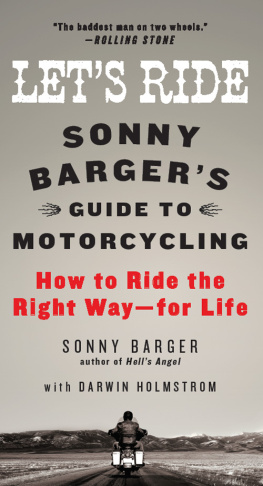


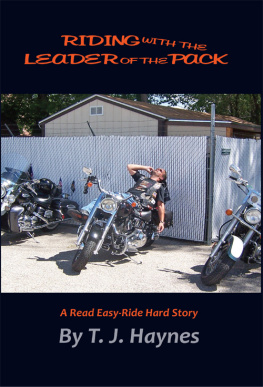
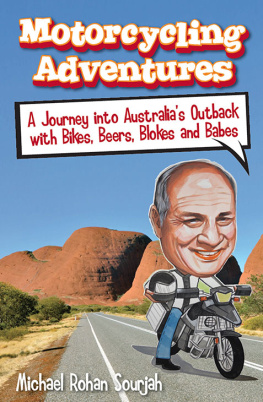
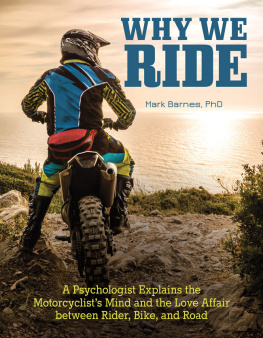
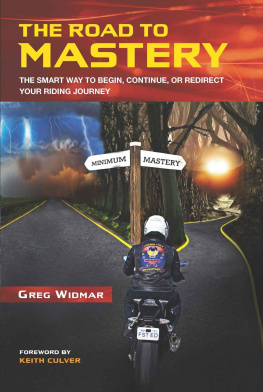
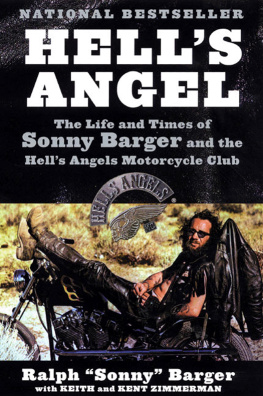
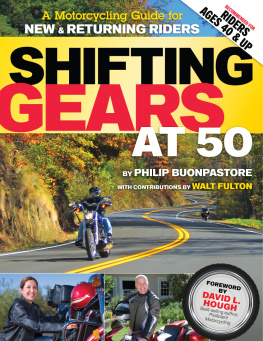
![Sonny Barger & Darwin Holmstrom - Lets ride: Sonny Bargers guide to motorcycling ; [how to ride the right way - for life]](/uploads/posts/book/135921/thumbs/sonny-barger-darwin-holmstrom-let-s-ride-sonny.jpg)
